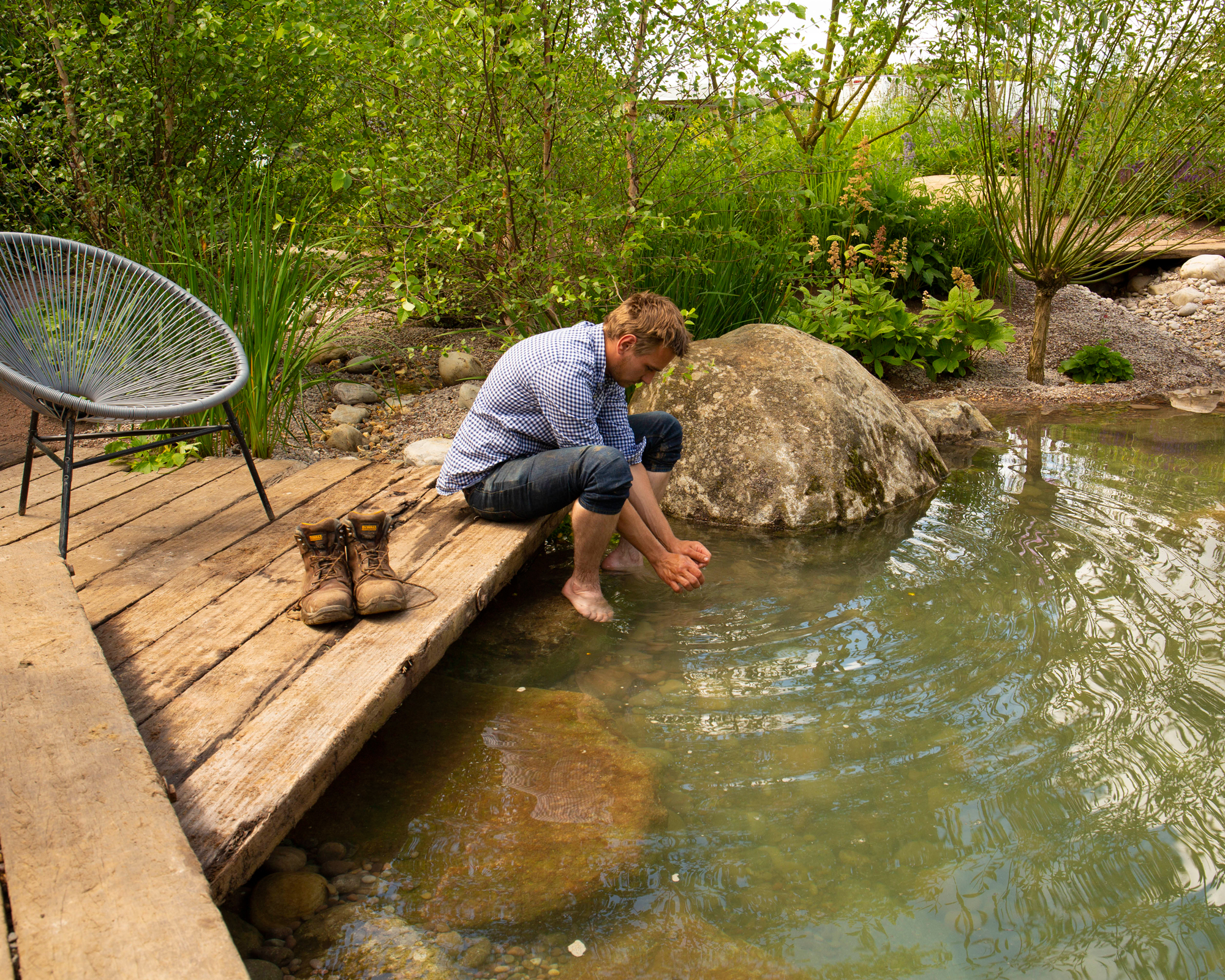What our gardens could look like in the future, according to a garden designer
A new RHS garden exhibited at the Hampton Court Palace Garden Festival shows how our gardens may soon look to better cope with climate change

What might our gardens look like in the future? With the effects of climate change now felt all over the world, many gardeners will have to make changes to make sure their plants survive and thrive, and that they support local wildlife with their gardening.
Wildlife gardens and eco gardening are already at the forefront of many garden design ideas. And now we may have an example of what a typical garden may look like in the not-too-distant future.
The RHS Garden for a Green Future is seeking to raise awareness of the climate change crisis and show how our gardens may soon look. The garden has been designed by Jamie Butterworth, Managing Director of Form Plants, and it gives some invaluable tips on what we should all do to make sure our gardens adapt to climate change.
1. Rethinking the plant selection

'We need to adapt to the changes that are happening in our climate rather than fight against them,' says James. 'This garden seeks to show how we can do that. Plant selection is key, choosing varieties that are best able to cope with our increasingly unpredictable weather'. The best drought tolerant plants and tough meadow mixtures feature on the slopes and tops of the mounds with domes of copper beech, Fagus sylvatica purpurea, adding texture and structure. The perennials change to more wet tolerant varieties and finally merge into marginals at the edge of the pool.
2. Incorporate water management systems

Jamie Butterworth at the Garden for A Green Future pool
As many gardens now experience months of drought often followed by months of flooding, conserving and managing water in our gardens in essential. Weaving through and dividing the space are ‘rivers’, that are all but dry in July, but fill with winter flood water and direct the flow towards the central pool.
Here, cantilevered decking ideas stretch out over the water, which is flanked by beautiful multi-stemmed river birch, Betula nigra and willow, Salix alba, creating dappled shade and distinctive structure.
3. Lawns are out, meadows are in

Jamie's garden continues the trend for gardeners learning how to plant a wildflower meadow that has been gaining strength in recent years. Perfectly manicured lawns and large areas of hard landscaping have been replaced by low-maintenance, biodiverse meadow mixes with self-seeded perennials dotted amongst the grasses and cocooned outdoor seating ideas nestle amongst dense planting.
Jamie went on to say: 'I feel truly privileged to have created this garden which carries such a vital message for us all. Gardening is all about caretaking and nurturing the earth and we all need to adopt a gentler hand in order to manage the changes that we are experiencing. If we can learn to adapt to these, rather than battle against them, our gardens and wildlife will flourish.'
The RHS Garden for a Green Future can be seen at the RHS Hampton Court Flower Show, running from 6th – 11th July.
Anna writes about interior design and gardening. Her work has appeared in Homes & Gardens, Livingetc, and many other publications. She is an experienced outdoor and indoor gardener and has a passion for growing roses and Japanese maples in her outside space.
